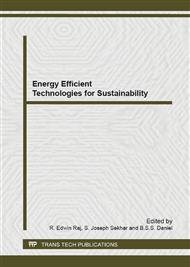p.164
p.173
p.180
p.188
p.195
p.199
p.206
p.213
p.218
Development of Energy Saving and Environment Friendly Aluminum Hybrid Composite Materials for Vehicle Applications
Abstract:
Our environment is majorly polluted by the release of hazardous gases into the atmosphere mainly from automobiles. The day-by-day increase in the usage of automobiles on the roads and decrease in the natural fuel source stresses engineers and scientists to develop engines with better fuel efficiency and reduced negative impact on environment. This could be feasible by controlling the engine tribological parameter using composite material. Clearly it is by reducing the weight and friction in the engine by applying suitable composite material and thereby reducing the wear, it can easily control the hazardous emissions to the environment and thereby keeping the environment safe.
Info:
Periodical:
Pages:
195-198
Citation:
Online since:
September 2013
Keywords:
Price:
Сopyright:
© 2013 Trans Tech Publications Ltd. All Rights Reserved
Share:
Citation:


